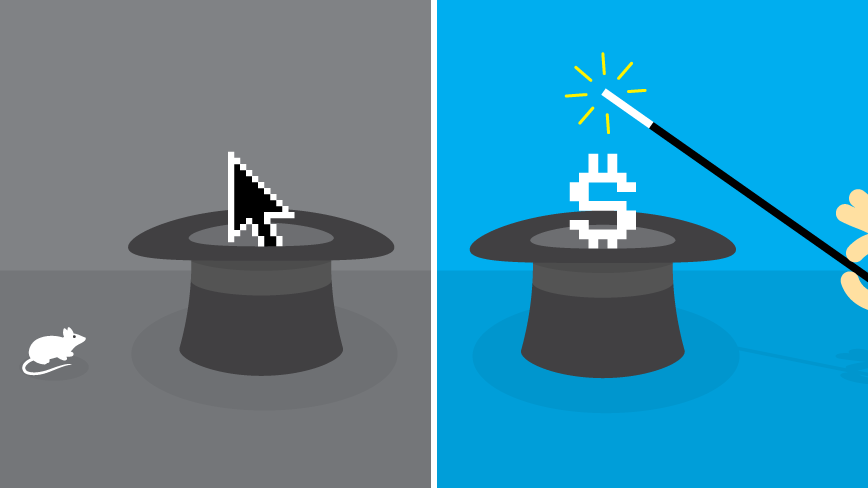Learn about three of the most effective digital marketing strategies brands use to convert digital traffic into sales and clicks into cold, hard cash.
Rumplestiltskin may be able to spin straw into gold, but marketers can perform real magic: spinning web traffic into actual sales. Getting people to part with their cash online is not always easy. Therefore, marketers have to develop sophisticated strategies that take natural human behaviors into account and use them to design a winning approach that results in sales. These strategies work even for brands that do not sell directly online. So, let’s consider all the various ways digital marketers can convert clicks into cash.
Getting to Know Your Audience
One of the biggest powers digital marketers have at their disposal is their ability to learn important characteristics about their customer base from data. While in-person interactions like store visits may be hard to quantify, digital actions leave a footprint that is quite informative.
Digital marketers can use the left behind information to answer fundamental questions about their audience, like “What demographics seem most interested in our product offering?” Answering these questions allows brands to construct sophisticated buyer personas and tailor messages to those personas at the perfect stage of their buying journey.
Sources like social media offer a bunch of such information. “You can learn a lot from people’s profiles,” said marketer Ardath Albee, who uses LinkedIn to learn about the vocabulary and values audiences use as their social currency. Learning these aspects can create a better product as well as better messaging, which is needed to sell the product in the short run.
Blurring the Line between Bricks and Clicks
More brands are beginning to connect the dots between online activities and in-store sales. People browsing with a low intent to buy may be drawn in by a particular campaign or promotion, prompting them to later take action on a purchasing decision.
Many retailers used to think of such a cause-and-effect relationship as questionable. However, with the right strategy, it works! JCPenney used the “Bend the Trend” promotion to encourage users to come up with and share customized outfits on social media that they could add to their cart upon completion. Since JCPenney also offers same-day pickup, buyers could immediately go pick up their purchases. CEO Marvin R. Ellison credited these omnichannel strategies with lifting Q4 sales significantly. “These new capabilities allowed us to deliver record holiday online sales in the fourth quarter and we’ll continue to have plenty of upside to grow,” Ellison said.
Make Visitors an Offer They Can’t Refuse
Brands can create quick sales through digital platforms without long-winded segmentation or nurturing strategies — although both can help — by offering coupons. Digital coupon use has soared in recent years, with well over half of Americans having redeemed a digital coupon or code in 2015. Since 55% of shoppers use their smartphone to find promotions while in-store, brands competing for attention on the shelf can gain an important partner in the crucial final moments of a customer’s buying decision.
This strategy pays double benefits by offering potential customers an incentive to buy now and providing tools to measure the effectiveness of turning online campaigns into real world sales.
Altogether, these three tactics are nothing new to the digital world or marketing in general, but they are growing more sophisticated by the day in marketers’ efforts to change the disappearing interest of an online user into a desire to become a paying customer.

